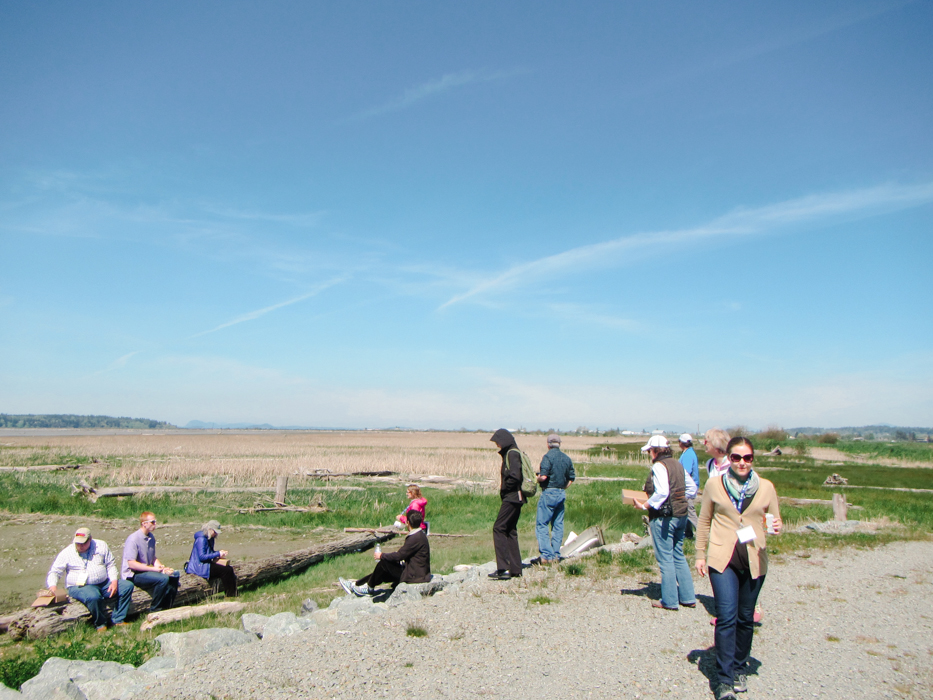A tour of the preserve with the American Planning Association
Written & Photographed by Marlo Mytty, Conservation Coordinator Puget Sound Programs
It was great to get outside last weekend and lead a tour of The Nature Conservancy’s Port Susan Bay preserve for nine people, mostly planners, who were in Seattle for the American Planning Association’s National Conference. Getting out of the office to see and share the story of the restoration at the Preserve with others not familiar with the project is what helps make our work on the ground more real and meaningful for me.
The folks who attended brought diverse backgrounds and perspectives and came from afar - from Nebraska, Georgia, Virginia, Louisiana, Montana and British Columbia! It even included a student from Iowa and a former TNC staffer who helped develop the Natural Heritage program in the 1980s. The weather cooperated and the visitors were treated to views of the Cascades and Olympics and fertile farmland on the drive up. The birders in the group donned their binoculars upon arrival to watch birds at the site.
There was a lot of interest from the group around what nearby farmers, landowners, and the local community thought about the project and how they were impacted by it. It highlights the importance of working with neighboring landowners and the community for folks working on these types of projects in all geographies.
In the case of Port Susan Bay, all stakeholders were included in the process early on. The project provided not only ecological benefits, including new habitat for juvenile Chinook salmon, but also met the co-equal goal of enhanced flood protection for nearby farms and homes. There was significant support from the locals. This model of designing projects to meet both ecological and community goals is something we are replicating across Puget Sound through our Floodplains by Design initiative.
At the end of the tour, participants were reluctant to get back on the road. Yet, it made for a perfect ending, when upon exit, a Northern Harrier flew by the bus and flashed its white rump patch!
























